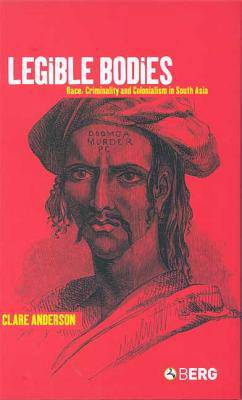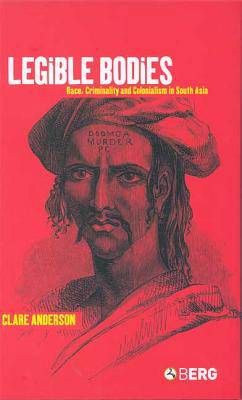
- Retrait gratuit dans votre magasin Club
- 7.000.000 titres dans notre catalogue
- Payer en toute sécurité
- Toujours un magasin près de chez vous
- Retrait gratuit dans votre magasin Club
- 7.000.0000 titres dans notre catalogue
- Payer en toute sécurité
- Toujours un magasin près de chez vous
271,45 €
+ 542 points
Format
Description
From the late eighteenth to mid-twentieth centuries, the British incarcerated tens of thousands of prisoners in South Asian jails and transported tens of thousands of convicts to penal settlements overseas in South East Asia, the Indian Ocean and the Andaman Islands. Legible Bodies explores the treatment of these native criminals and sheds light on a largely overlooked practice of empire.
British penal administrators created a series of elaborate mechanisms to render criminal bodies legible. They introduced visual tags to identify prisoners and convicts, seeking to mark and/or read them both as individuals and as members of broader penal categories. The first broad theme of the book discusses the introduction of these new modes of identification - penal and decorative tattooing, clothing, photography, anthropometry and fingerprinting - exploring their frequent failures and prisoner and convict resistance against them. The second theme of the book considers the ways in which the colonial authorities atempted to use the Indian body to construct broader social groupings, both in relation to penal hierarchies and in the making of soiological categories of 'criminal types'. Thirdly, the author looks at the ways in which incarcerated communities comprised a convenient sample for colonial explorations of the nature and significance of race and caste in the Indian subcontinent. Scientists and ethnographers used prisoners to explore biological and social manifestations of the Indian other.
Through a careful reading of convicts legible bodies, the author provides a new perspective on colonial history.
British penal administrators created a series of elaborate mechanisms to render criminal bodies legible. They introduced visual tags to identify prisoners and convicts, seeking to mark and/or read them both as individuals and as members of broader penal categories. The first broad theme of the book discusses the introduction of these new modes of identification - penal and decorative tattooing, clothing, photography, anthropometry and fingerprinting - exploring their frequent failures and prisoner and convict resistance against them. The second theme of the book considers the ways in which the colonial authorities atempted to use the Indian body to construct broader social groupings, both in relation to penal hierarchies and in the making of soiological categories of 'criminal types'. Thirdly, the author looks at the ways in which incarcerated communities comprised a convenient sample for colonial explorations of the nature and significance of race and caste in the Indian subcontinent. Scientists and ethnographers used prisoners to explore biological and social manifestations of the Indian other.
Through a careful reading of convicts legible bodies, the author provides a new perspective on colonial history.
Spécifications
Parties prenantes
- Auteur(s) :
- Editeur:
Contenu
- Nombre de pages :
- 288
- Langue:
- Anglais
Caractéristiques
- EAN:
- 9781859738559
- Date de parution :
- 01-05-04
- Format:
- Livre relié
- Format numérique:
- Genaaid
- Dimensions :
- 137 mm x 223 mm
- Poids :
- 426 g

Les avis
Nous publions uniquement les avis qui respectent les conditions requises. Consultez nos conditions pour les avis.






